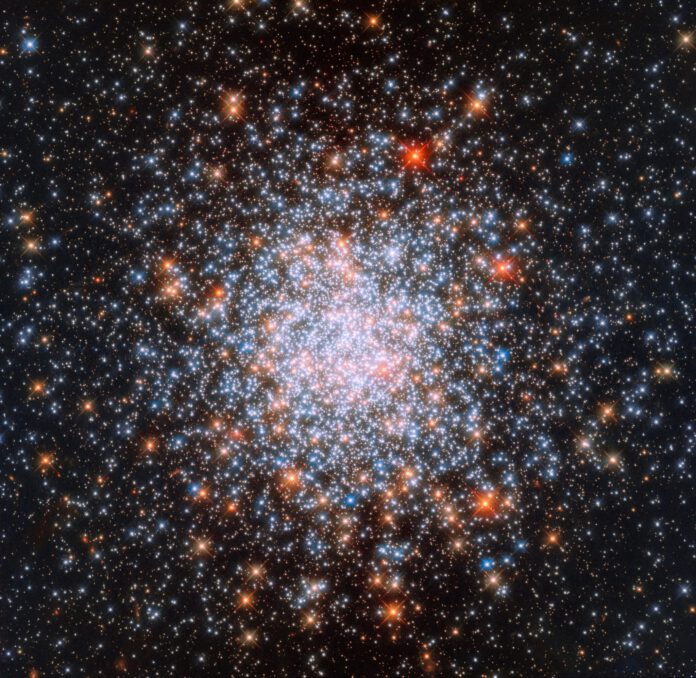
The Universe’s Countless Star Clusters
In the grand cosmos, an incalculable number of star clusters exist. These clusters are made up of many hundreds or thousands of stars, bound together by gravity. The space photo of the week reveals a striking spherical star cluster at the edge of a satellite galaxy of our Milky Way.
Introduction to NGC 1866
NGC 1866 is a globular cluster that resides within the Large Magellanic Cloud, situated some 160,000 light-years from Earth. This cluster becomes visible only through quality binoculars or a telescope, explaining why this star group was only identified in 1826 by Scottish astronomer James Dunlop.
NGC 1866 is a relatively young globular star cluster, unique in its proximity to Earth, permitting the detailed observation of its individual stars—a distinguishing factor from globular clusters located in distant galaxies that are at least millions of light-years away from us.
The Oldest Objects in the Universe
Globular star clusters represent some of the oldest objects in the universe. In 2022, astronomers discovered a globular star cluster close to the Sparkler galaxy in the first Deep Field image taken by the James Webb Telescope.
Our very own Milky Way hosts approximately 150 globular star clusters. However, scientists are yet to understand precisely when and how these dense knots of stars formed. While astronomers confirm that globular star clusters can be immensely aged, it is challenging to determine their exact age. The stars within these clusters are believed to contain few heavy metals—elements primarily produced by stellar nuclear fusion. Therefore, the stars in these clusters are formed from gas that was not enriched with many heavy atoms, existing in the early universe.
The age of the Sparkler galaxy is relatively easier to determine than that of NGC 1866. “We view this galaxy as it appeared nine billion years ago when the universe was just 4.5 billion years old,” explains Lamiya Mowla. “This is similar to guessing a person’s age based on their appearance. It’s simple to distinguish between a 5 year-old and a 10 year-old, but the difference between a 50 year-old and a 55 year-old is harder to determine.”
Space Wonders: Globular Clusters
Regardless, globular clusters are remarkable cosmic features. If one looks closely at the image of NGC 1866, it becomes evident that the density of the globular star cluster increases towards the center, with more stars congregating in that area. At first glance, it might appear that you could easily travel from star to star—but this is deceptive.
In reality, significant space still exists between the stars, even though the distances between them are much smaller than outside the cluster. On average, stars in a globular cluster are separated by a distance of one light-year, compared to an average distance of five light-years between neighboring stars outside the cluster.











